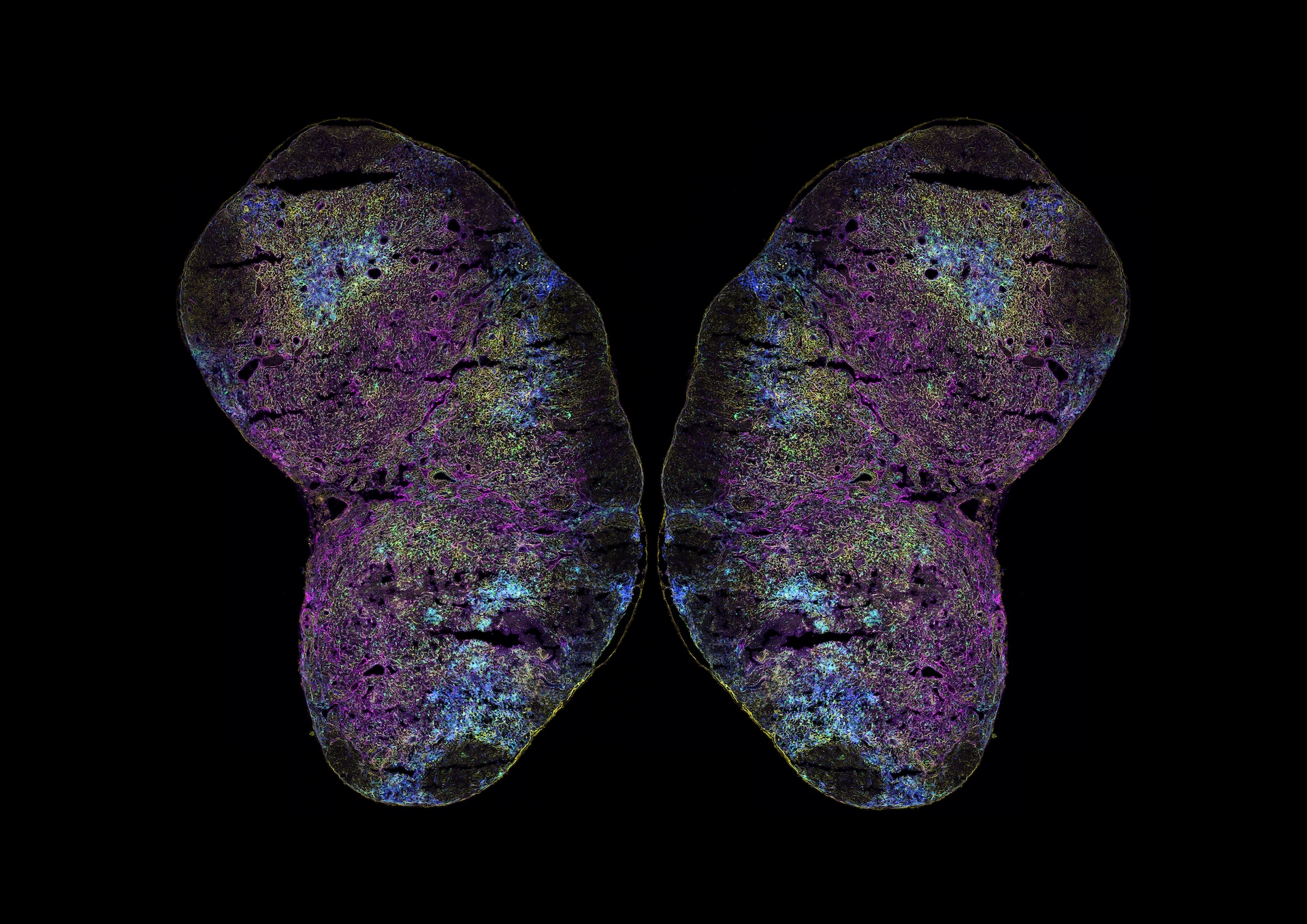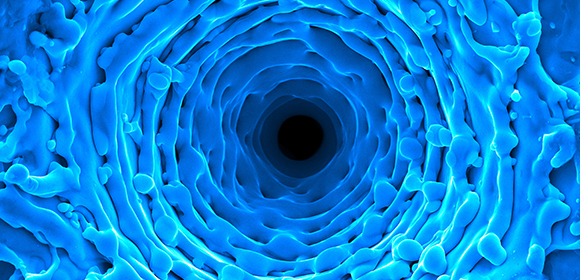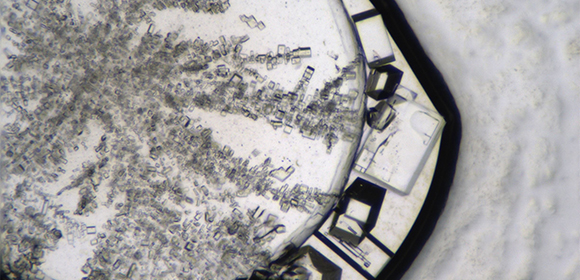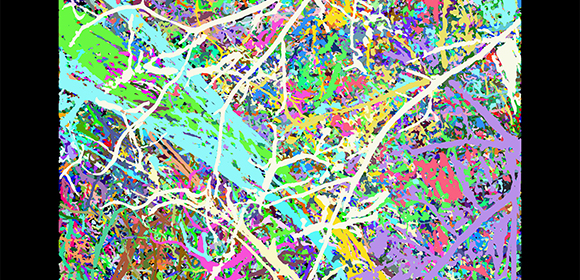Chemokine chrysalis

Lymph nodes are small, unassuming structures but there’s real beauty in the role they play as a barrier against disease, filtering and inactivating foreign substances like cancer cells and pathogenic organisms.
Within each of the hundreds of lymph nodes in the body, small proteins called chemokines guide immune cells to certain distinct locations; this migration is critical in allowing the body to mount appropriate immune responses against invaders.
In Raymond’s ‘butterfly’ image of a lymph node in cross-section, different colours identify cells that produce different chemokines, showing where each chemokine is produced and where it binds.
Changes in the chemokine network may have serious consequences, such as reducing our ability to clear viral infections and migrating cancer cells.
Being able to visualise the sophisticated and strangely beautiful chemokine network within the lymph node will help researchers and clinicians tailor chemokine gradients for better immune outcomes in areas like vaccination and cancer treatment.








